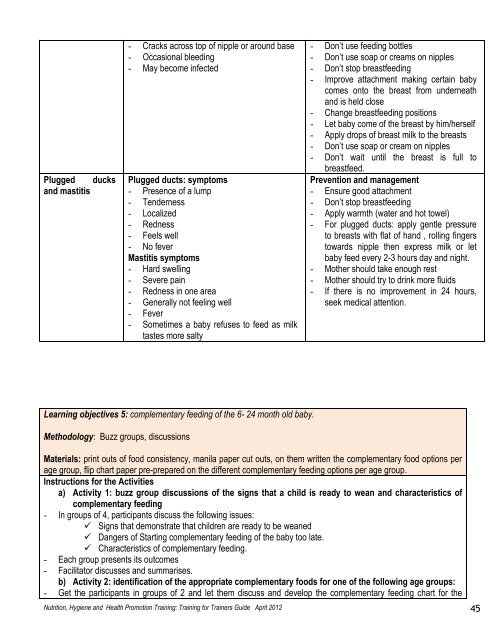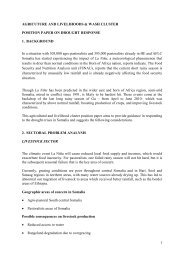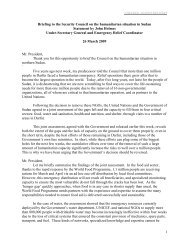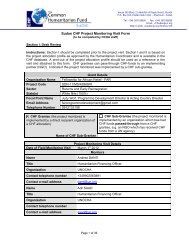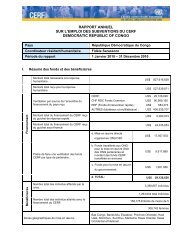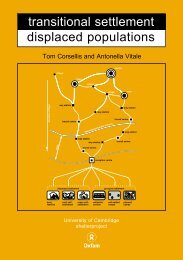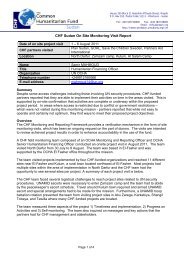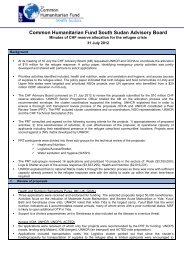Nutrition, Hygiene and Health Promotion Training - OCHANet
Nutrition, Hygiene and Health Promotion Training - OCHANet
Nutrition, Hygiene and Health Promotion Training - OCHANet
Create successful ePaper yourself
Turn your PDF publications into a flip-book with our unique Google optimized e-Paper software.
Plugged ducks<strong>and</strong> mastitis- Cracks across top of nipple or around base- Occasional bleeding- May become infectedPlugged ducts: symptoms- Presence of a lump- Tenderness- Localized- Redness- Feels well- No feverMastitis symptoms- Hard swelling- Severe pain- Redness in one area- Generally not feeling well- Fever- Sometimes a baby refuses to feed as milktastes more salty- Don‘t use feeding bottles- Don‘t use soap or creams on nipples- Don‘t stop breastfeeding- Improve attachment making certain babycomes onto the breast from underneath<strong>and</strong> is held close- Change breastfeeding positions- Let baby come of the breast by him/herself- Apply drops of breast milk to the breasts- Don‘t use soap or cream on nipples- Don‘t wait until the breast is full tobreastfeed.Prevention <strong>and</strong> management- Ensure good attachment- Don‘t stop breastfeeding- Apply warmth (water <strong>and</strong> hot towel)- For plugged ducts: apply gentle pressureto breasts with flat of h<strong>and</strong> , rolling fingerstowards nipple then express milk or letbaby feed every 2-3 hours day <strong>and</strong> night.- Mother should take enough rest- Mother should try to drink more fluids- If there is no improvement in 24 hours,seek medical attention.Learning objectives 5: complementary feeding of the 6- 24 month old baby.Methodology: Buzz groups, discussionsMaterials: print outs of food consistency, manila paper cut outs, on them written the complementary food options perage group, flip chart paper pre-prepared on the different complementary feeding options per age group.Instructions for the Activitiesa) Activity 1: buzz group discussions of the signs that a child is ready to wean <strong>and</strong> characteristics ofcomplementary feeding- In groups of 4, participants discuss the following issues: Signs that demonstrate that children are ready to be weaned Dangers of Starting complementary feeding of the baby too late. Characteristics of complementary feeding.- Each group presents its outcomes- Facilitator discusses <strong>and</strong> summarises.b) Activity 2: identification of the appropriate complementary foods for one of the following age groups:- Get the participants in groups of 2 <strong>and</strong> let them discuss <strong>and</strong> develop the complementary feeding chart for the<strong>Nutrition</strong>, <strong>Hygiene</strong> <strong>and</strong> <strong>Health</strong> <strong>Promotion</strong> <strong>Training</strong>: <strong>Training</strong> for Trainers Guide April 2012 45


